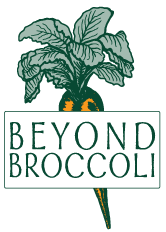The idea that food is either “good” or “bad” is one I have struggled with for years. I don’t mean that I can’t decide which foods support good health and which do not, though dietary trends at any given time try to complicate this picture. What I struggle with is the moralistic labeling of foods, and ultimately how we view ourselves when we eat these foods. If we eat “healthy” we feel virtuous and if we eat “junk food” we feel guilty. The reality is that our overall eating habits are what matter most, including the why, what, when, where, how, and how much we eat. To boil all that down to “I ate French Fries so I’m bad” or “I ate a salad so I’m good” just isn’t helpful for people who struggle with health or weight issues, and it’s not an accurate picture of health for anyone.
So, for years I supported not labeling foods as simply “good” or “bad,” until I learned about how the food industry co-opted the “no bad foods” mantra as a way to peddle more highly processed (and profitable) foods with little (or no) nutritional value. While I do believe there is room in a healthy overall diet for some less-nutritious options, and I also believe foods are not inherently “good” or “evil” – food is just food, hawking the idea that there is no such thing as a bad food from a nutritional perspective is ludicrous. Furthermore, billions of dollars are spent to market these less nutritious options that are usually cheaper and more widely available than more nutritious foods, and in many cases these foods are engineered to override our internal hunger/fullness regulators. Suddenly the “all foods fit” model is more difficult to embrace.
Now, however, I believe the bigger problem with the oversimplification of foods as “good or bad” or stating “there are no bad foods” is that we accept these reductionist ideas without much thought. In fact we have become so focused on what we eat (or don’t eat) that we give little attention to all of the other aspects of eating mentioned above (why, when, etc.). As it turns out, some of these other factors have a major impact on both what and how much, we eat.
We humans eat for a variety of reasons and always have. Those of us in the developed world have more food available than ever before, so merely having enough food is not the issue it was for our ancestors. Even so, we have this idea that food “should” only be for nourishment. The reality is that even primitive cultures that did not have a consistently adequate food supply used food for fuel or sustenance, sometimes medicine, as well as social reasons such as celebrations.
To limit food to only fuel or medicine (“good food”) is not realistic for most people. While some may choose this path to the table, most of us want food to be more versatile. So what if we first ask ourselves: why am I eating this food? Or why do I want that food? We could then have the honest, open conversation with ourselves about our overall eating habits. Sometimes we may answer: I’m hungry and this food will fill me up or I don’t feel well and this food will nourish me. Other times we may say: I like the taste of this food or I want to be part of this celebration with food.
With this ‘why we eat’ approach we can take the judgment out of eating so we are not simply “good” or “bad” because we ate or chose not to eat a particular food. We can learn more about why we choose the foods we do. If we find ourselves making many of our food choices for non-hunger reasons – we are bored, frustrated, happy, sad, or lonely and food is a way to distract, soothe, comfort, numb, or reward ourselves, then we can address these other issues. If what we really need is something other than food, no amount of food will satisfy us. If we are eating because the food is in eyesight or we just saw an ad for a food we like, then we can think about ways to limit those visual cues or at least acknowledge we are influenced by them.
The “why am I eating?” approach can also help us re-connect with when we are hungry and when we have had enough. As we learn more about what we really need, we don’t have to rely on others to tell us what to eat because we will know what makes us feel good – physically and mentally. Instead of asking ourselves “is this food good or bad” we can ask “is this food what I really need or want right now?”



May I reblog? It’s not exactly my approach but an eloquent and through-provoking essay some of my readers may be interested in.
Stephanie – thanks for your kind words and I’m happy you want to share with your readers!
Well said, Mary! I think the idea of asking why we are eating, is a mentally healthy way to live, as well as physically healthy!